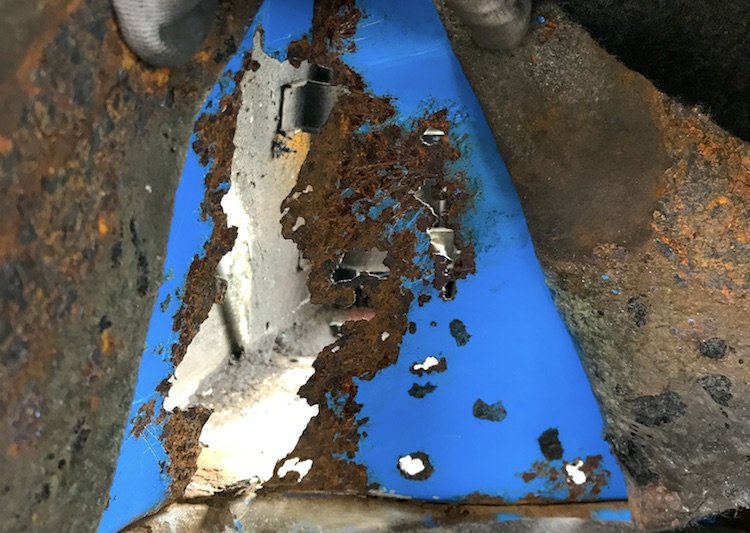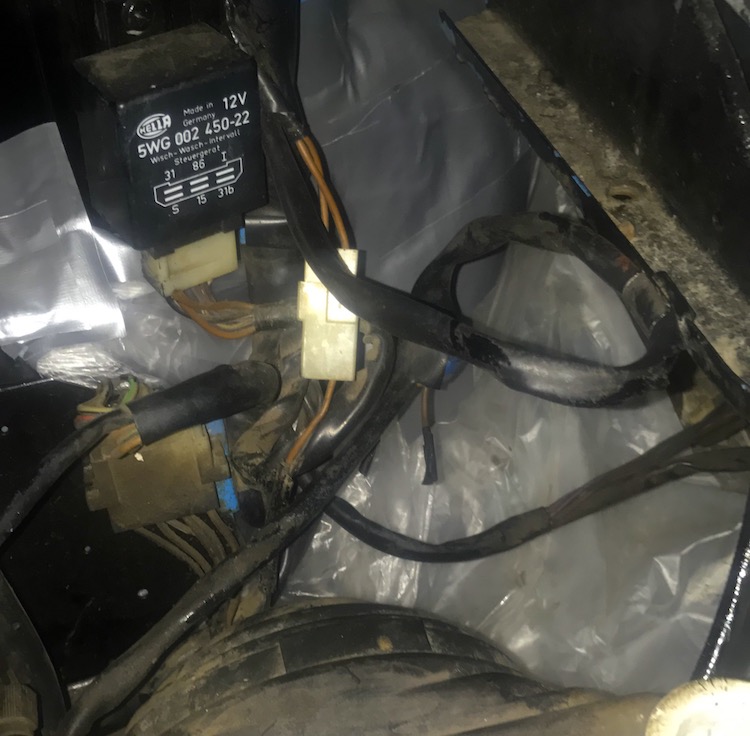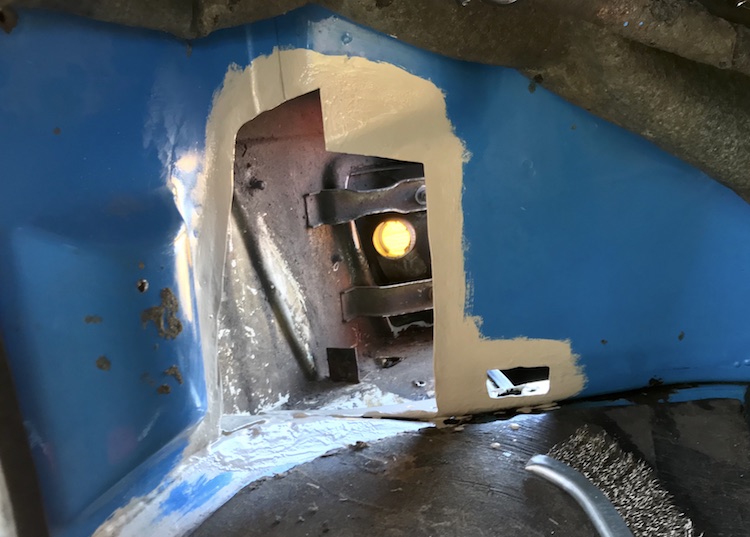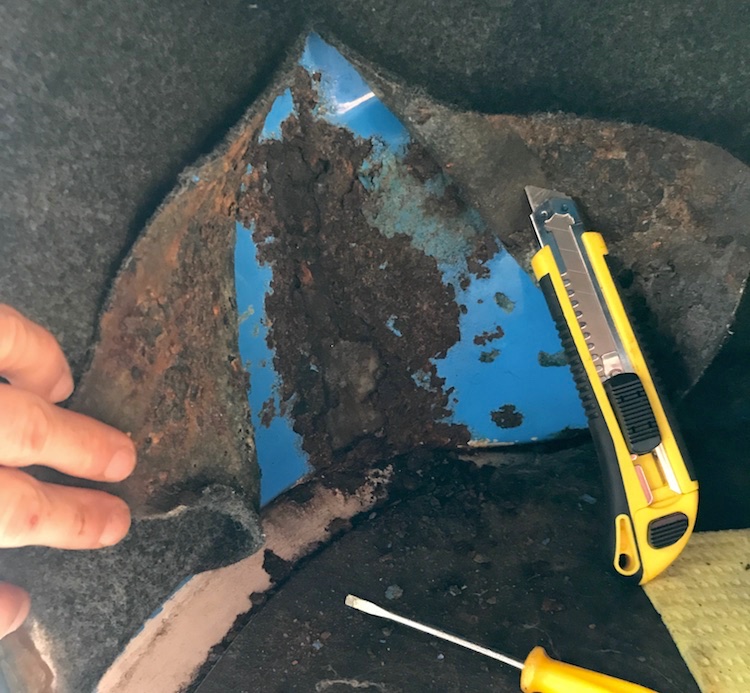I haven’t moved my van since I wrote my last blog post. The spot on the cliffs was so beautiful. I really enjoyed the vibe in our little Mercedes gang. The perfect environment to take a little break from traveling.

Once in awhile, we drove to the next village to buy some basic food: vegetables, fruits and bread. The choice of fresh food was usually modest but good enough for a balanced diet. One of the shops even sold canned sardines with a German label.

Globalization at its best: They probably caught the fish somewhere in Asia, shipped it around the globe to label it in Germany and finally sold it in Morocco? ![]() We preferred buying fresh fish from local fishermen. Like this big guy.
We preferred buying fresh fish from local fishermen. Like this big guy.

I cooked it in olive oil with some herbs and vegetables.

Delicious! There was no need for canned fish from Germany. ![]()
A little story from last summer
I realized that the insulation below the floor mat was wet after driving in the rain last summer. I tracked the leak back to the left side of the footwell. There was a lot of rust behind the carpet.
I removed the windshield washer reservoir in the engine compartment to check the damage from the other side. It looked even worse. The huge plastic tank had slowly rubbed the paint off the body over the years.

This is a well known design issue of the Mercedes T1 models. Hidden behind the tank and the carpet, the rust ate all the metal.

I was at a lonely beach in the north of Spain when I discovered the hole. I didn’t have the material and tools to properly fix it. So, I removed the rust as good as I could using wire brushes and citric acid, a natural rust converter.

I fortunately had a can of Fluid Film on board that I sprayed over the treated spots to prevent further corrosion. I wrapped everything into plastic using duck tape to keep rain water outside.

I knew the construction wouldn’t last long. It was a pragmatic workaround to keep my van and feet dry. ![]()
Getting the hole finally fixed
My short term solution lasted surprisingly long. It was about time to replace the loose duck tape with some proper material. The weather was sunny and warm during the last weekend. Perfect conditions to get the hole finally fixed.
My battery and converter were strong enough to operate Stefan’s powerful angle grinder.

We cut out all the rusty parts from the inside,

sanded all the edges,

treated the remaining rust with citric acid,

bended fitting body sheets

which nicely covered the cutouts,

varnished all the pieces with a two-component paint,

as well as the engine compartment

and the footwell.

Finally we put everything together with the SikaFlex 252 adhesive that I used to fix the solar panels on my roof.

The result looked leakproof and way more solid than the previous solution.

Given that we fixed the hole in the open with materials that remained from previous repair sessions, I’m very happy with the result. My van will hopefully stay dry and warm inside during the next year(s). ![]()
Thanks for all your support, Stefan! ![]()
